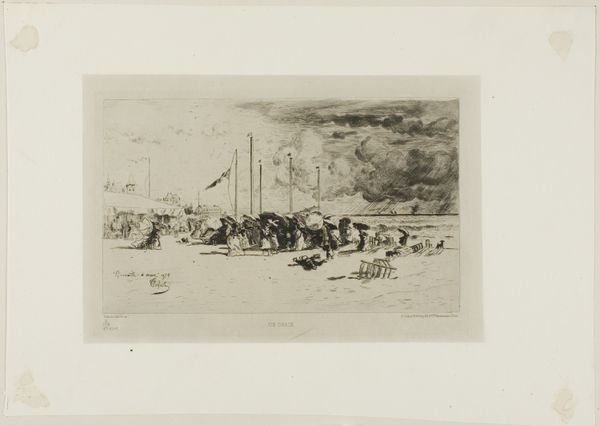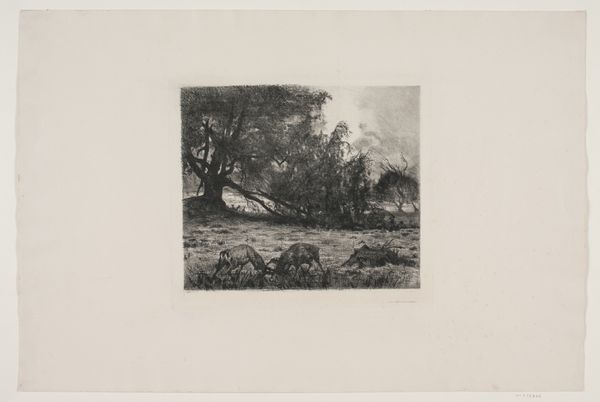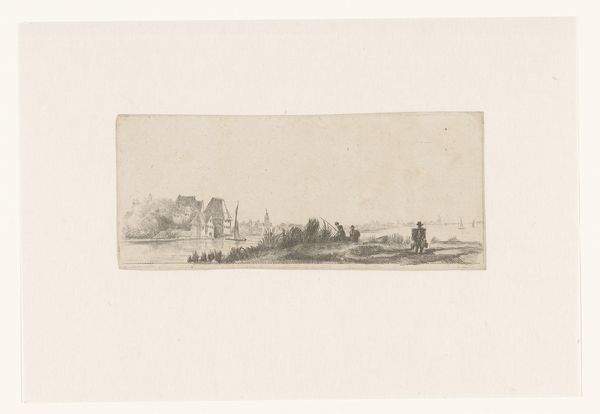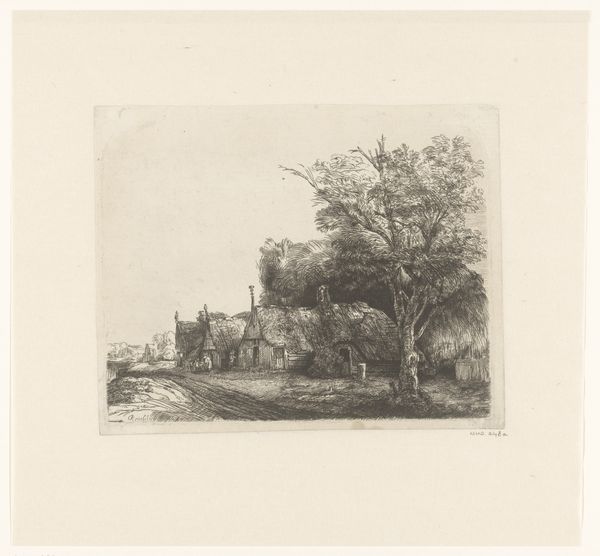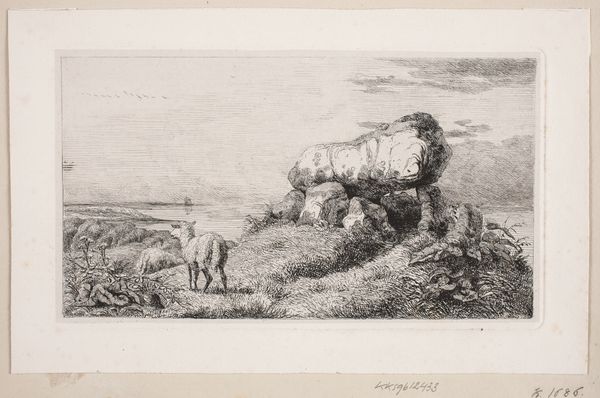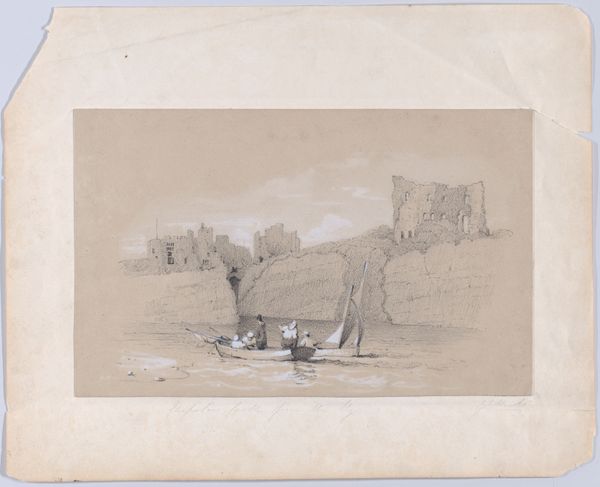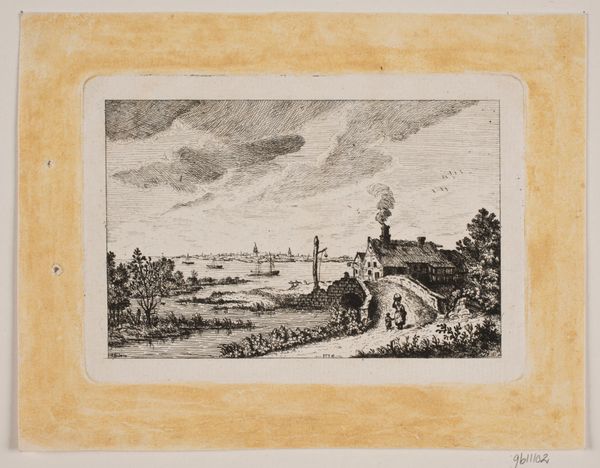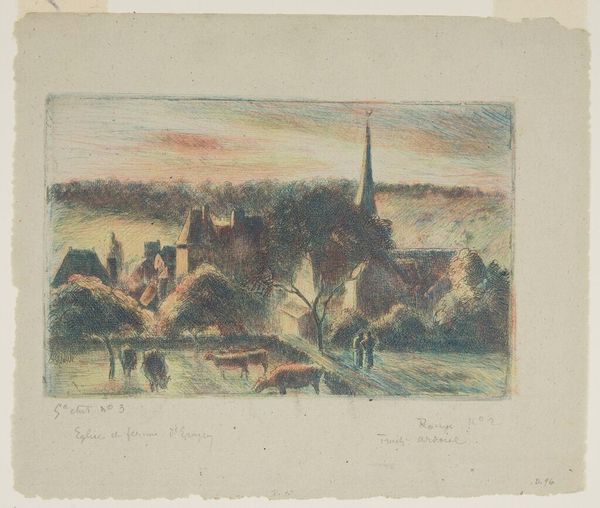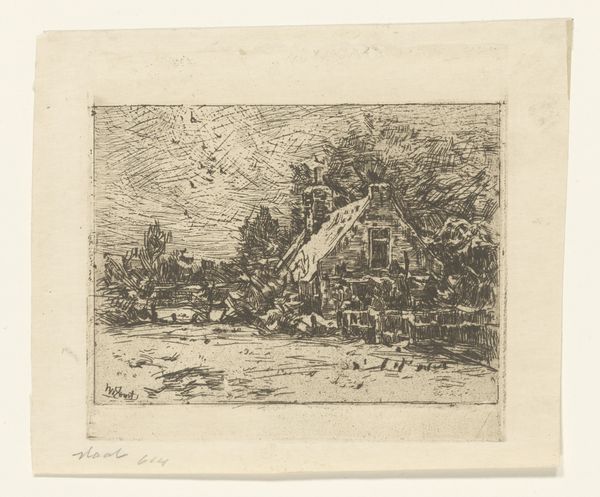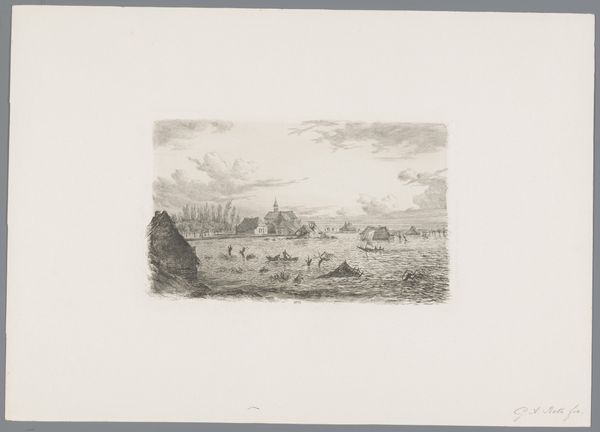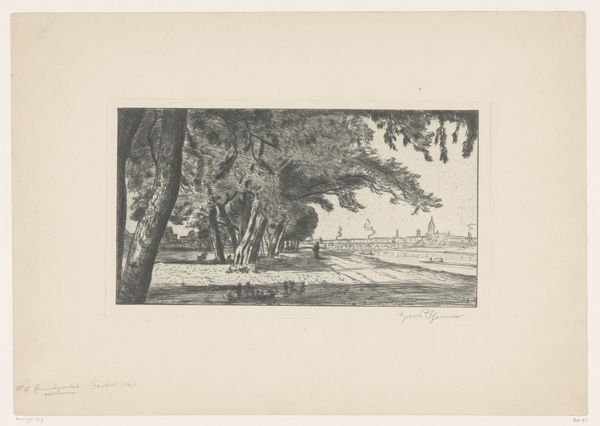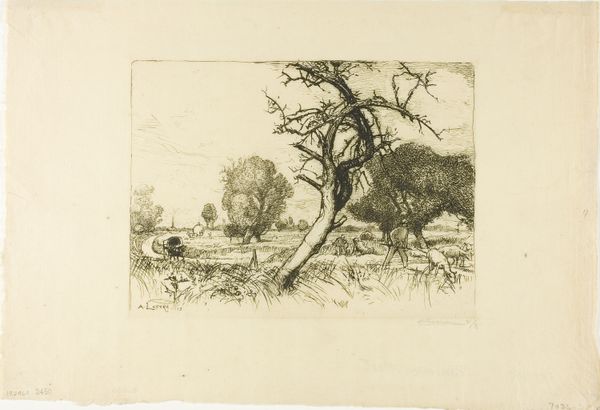
Dimensions: 155 × 243 mm (image/plate); 251 × 323 mm (sheet)
Copyright: Public Domain
Camille Pissarro made this etching, titled *Church and Farm at Éragny*, using a metal plate and etching needles. Pissarro scratched lines into a coated metal plate, which was then submerged in acid. The acid bit into the metal where it was exposed, creating grooves that would hold ink. This plate was then used to print the image onto paper. The result is a landscape of remarkable tonal variation, achieved through the density of the etched lines. See how some areas, like the trees, have a depth of shadow? That's from the concentration of etched marks, each one carefully made. The etching process allows for the creation of multiple identical images, which democratized artmaking. Pissarro, who was deeply engaged in left-wing politics, was interested in how art could be more widely accessible, and less of a rarified commodity. The print medium itself speaks to the rise of industrial production and consumption, even as the image depicts a rural scene. It’s a potent reminder that even seemingly idyllic landscapes are shaped by the forces of labor, technology, and the wider world.
Comments
No comments
Be the first to comment and join the conversation on the ultimate creative platform.

